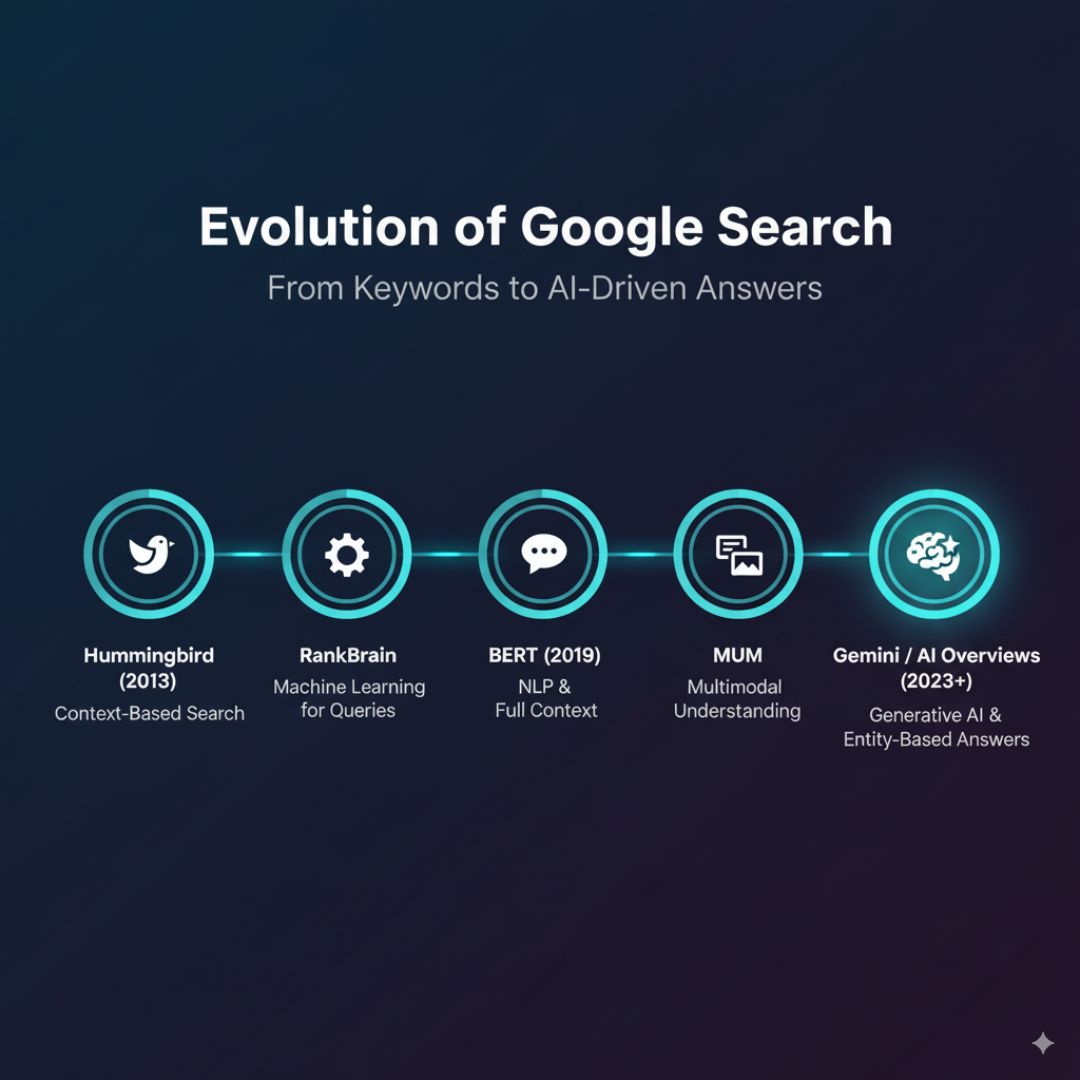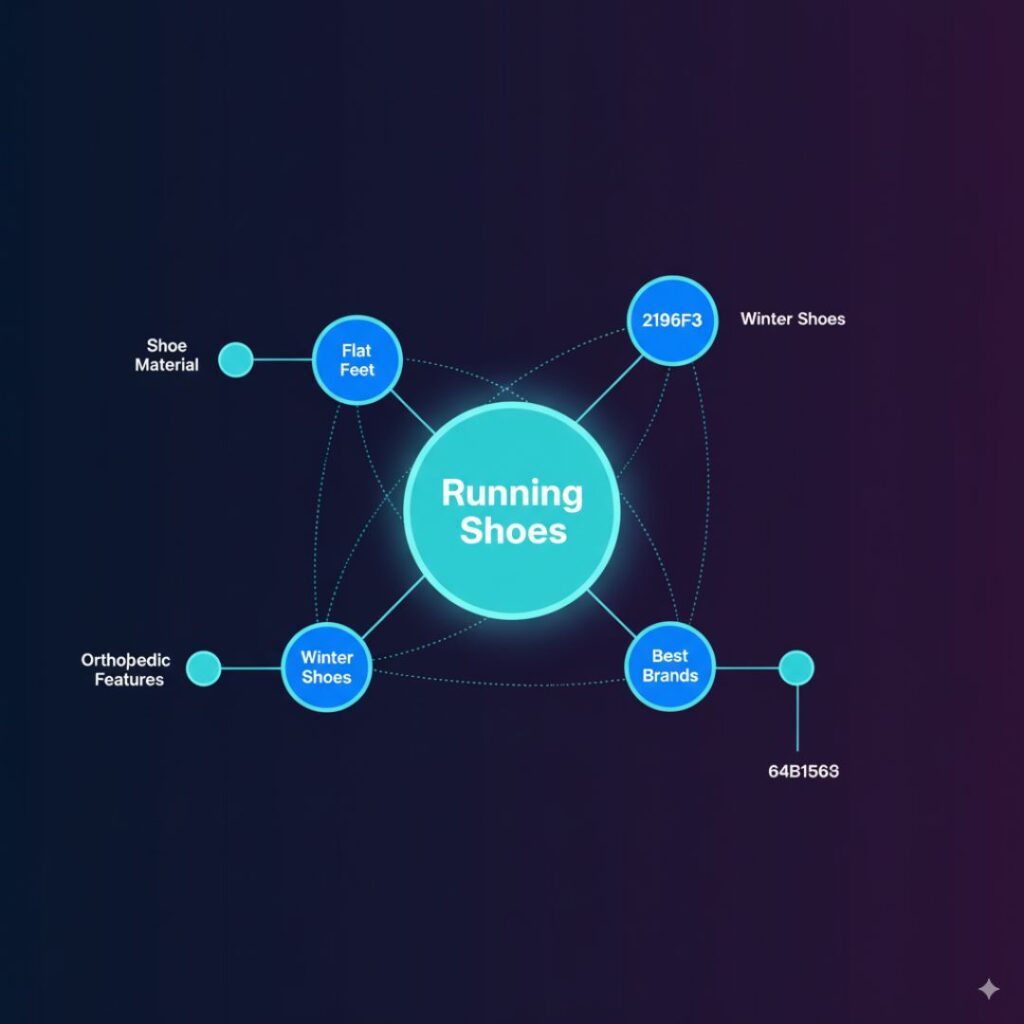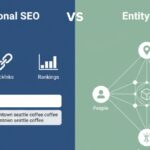Google ranks pages by entities, not only by keywords. Updates like Hummingbird, RankBrain, BERT, MUM, and Gemini shifted search from string matching to meaning. Today, Google uses entities, vectors, and AI to understand context.
Entities give clear signals. Apple Inc. is a company, while apple fruit is food. Search engines use these differences to serve accurate results. Vectors add power by showing how words and entities connect. Large language models process these links to match queries with the right content.
What Is Semantic SEO?
Semantic SEO optimizes for meaning, intent, and context. Search engines link words, entities, and intent through vectors. These vectors work for AI in the same way structured data works for Google—they give machines a clear map of meaning.
Why Is Semantic SEO Important Today?
Search has shifted from keywords to intent. In the past, ranking depended on keyword matches. Now, AI and natural language processing (NLP) interpret context, entities, and meaning. This makes results closer to real human searches. Content without semantic signals loses visibility because Google interprets intent, not just strings.
Why Do Search Engines Use Entities Instead of Keywords?
Keywords can confuse results, while entities clarify meaning. Paris may mean a city or a person, but entities help Google select the right one. Entities also power the Knowledge Graph, connect topics through clusters, and guide AI in interpreting intent and relationships.
This shift moved SEO from keyword stuffing to entity optimization—using schema, structured context, and topic clusters. For example, apple fruit links to food, while Apple Inc. connects to technology.
Google’s AI Search Evolution
Google’s updates show the path from keywords to entities:

- Hummingbird (2013): First major step to context-based search.
- RankBrain (2015): Machine learning to interpret unclear queries.
- BERT (2019): NLP model reading words in full context.
- MUM (2021): Multimodal model linking text, images, and languages.
- AI Overviews / Gemini / Bing AI (2023+): Generative AI giving entity-based answers.
Each stage reduced keyword reliance and strengthened entity-driven results.
How AI Models Process Entities
AI models use vectors, embeddings, and clusters to interpret meaning. They solve ambiguities like Paris city vs. Paris the person by analyzing attributes. Instead of counting keywords, they connect entities, intent, and context.
Embeddings store meaning, not strings. Dog is near puppy in embedding space, and Apple is near iPhone. This mapping helps search engines show results aligned with real intent.
Role of Transformer Models
Transformers power modern AI search. BERT reads words in both directions, MUM processes text and images across languages, and Gemini enables reasoning in AI Overviews. These models improve predictive ranking, conversational search, and entity weighting.
For example, in the query best running shoes for flat feet in winter, BERT identifies the intent, MUM adds seasonal and medical context, and Gemini reasons across attributes to deliver precise results.
Multi-Attribute Vector Indexes
Advanced search models use vector indexes to connect multiple attributes. For “Apple launch event,” results point to technology news, not fruit. Embeddings integrate text, images, and even sound, enabling AI to match meaning across modalities.
How Semantic SEO Works
Semantic SEO builds meaning around entities and context. Topic clusters connect pillar pages with subtopics. Internal linking strengthens relevance between connected entities. Entity-based indexing organizes concepts, while semantic clustering groups related topics for stronger authority.

AI re-ranking adjusts results using behavior signals. Predictive entity signals forecast future search needs. The Blank Sheet Test checks if content adds unique value.By applying these methods, both Semantic SEO strategies and structured content can guide search engines to interpret intent more effectively.
Entities vs. Keywords
A keyword is only a text string, like “Paris.” An entity represents a real concept. Paris as an entity is a city in France, with a population, landmarks, and coordinates.
Common entity types include:
- People: Albert Einstein
- Places: Paris, France
- Products: iPhone 15
How Entity Attributes Help Ranking
Schema markup structures entity details such as name, type, and description. Clear attributes improve rankings. For example, iPhone 15 is a smartphone from Apple, released in 2023, with defined features.
Connections matter too. Author → Book → Publisher shows relationships that boost authority. Trust signals like authorship, sources, and references also help. Google ranks content with strong experience, expertise, authority, and trust (E-E-A-T).
The Future of Semantic SEO & Key Takeaways
SEO is moving from keywords to entities. Google recognizes Paris as a city of 2.1 million people and Paris Hilton as a person born in 1981. Schema markup, sources, and author details build transparency and trust.
Artificial intelligence predicts queries with vectors and suggests answers before typing is complete. A start like best EV may trigger best electric car 2025.
Entity mapping builds long-term authority. By linking content topics through shared entities, you create a strong semantic structure that future-proofs SEO strategies.

